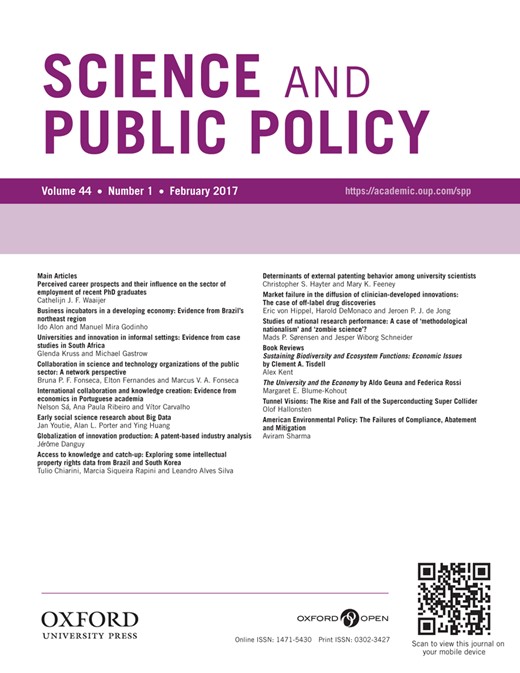-
Views
-
Cite
Cite
Christopher S. Hayter, Mary K. Feeney, Determinants of external patenting behavior among university scientists, Science and Public Policy, Volume 44, Issue 1, February 2017, Pages 111–120, https://doi.org/10.1093/scipol/scw037
Close - Share Icon Share
Abstract
Over the past 30 years, university patenting has grown dramatically as a result of the US Bayh–Dole Act (1980) and efforts among universities to encourage faculty to pursue intellectual property. Recent reviews of the literature show that university technology transfer is primarily conceptualized in terms a relatively linear process of disclosure, patenting, and licensing. While this is the general pattern for university patenting, many faculty inventions are also patented outside the university. Using data from a national survey of academic patenters, this paper estimates probit and negative binomial regression models to assess individual and organizational factors that contribute to patenting external to the traditional technology transfer process among university scientists. Findings indicate that external patenting is a function of the science, scientist’s training, and the lack of a department culture of encouraging patenting via technology transfer offices.



